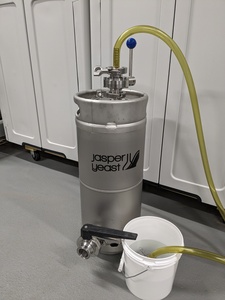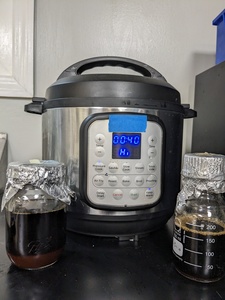Adjusting Sulfur Production in Beer
Sulfur Production in Lagers (and other styles)
While it's generally desirable to minimize sulfur production in lagers to avoid off-flavors, there are specific circumstances where increasing sulfur levels might be beneficial. Here are some methods to consider:
While it's generally desirable to minimize sulfur production in lagers to avoid off-flavors, there are specific circumstances where increasing sulfur levels might be beneficial. Here are some methods to consider:
Sulfur Production in Lagers (and other styles)
While it's generally desirable to minimize sulfur production in lagers to avoid off-flavors, there are specific circumstances where increasing sulfur levels might be beneficial. Here are some methods to consider:
-
Malt Selection:
- High-sulfur malts: Choose malts known for their higher sulfur content, such as certain roasted or kilned malts.
- Mashing conditions: Adjust mashing parameters to favor the extraction of sulfur-containing compounds from the malt.
-
Water Chemistry:
- Sulfate levels: Increase the sulfate content of your brewing water. This can promote the production of sulfur-containing compounds by yeast.
- pH: Lower the pH of your mash and wort to favor the production of sulfur compounds. However, be cautious as excessively low pH can lead to other issues.
-
Yeast Selection:
- Sulfur-producing strains: Choose yeast strains known for their tendency to produce sulfur compounds. Some hybrid strains or specific ale strains might be more prone to this behavior.
-
Fermentation Conditions:
- Temperature: Experiment with slightly higher fermentation temperatures, as some yeast strains may produce more sulfur at higher temperatures.
- Oxygenation: Reduce oxygenation during pitching. While oxygen is generally beneficial for yeast health, limiting it can sometimes encourage the production of sulfur compounds.
- Nutrient supplementation: Use yeast nutrients that specifically promote the production of sulfur-containing compounds.
-
Aging and Conditioning:
- Extended aging: Allow the beer to age for a longer period, as some sulfur compounds may develop or intensify over time.
Caution:
- While increasing sulfur production can add complexity to certain lager styles, excessive levels can lead to unpleasant off-flavors.
- It's essential to balance the desired level of sulfur with overall beer quality and consumer preferences.
- Always experiment with these methods in small batches to avoid significant losses.
Remember: The goal is to achieve a delicate balance of sulfur compounds that contribute to the desired aroma and flavor profile of your lager.
High-Sulfur Malts
While most malts contain some level of sulfur compounds, certain types are known to have higher concentrations. These include:
While most malts contain some level of sulfur compounds, certain types are known to have higher concentrations. These include:
- Roasted malts: Malts that have been roasted to a dark color, such as Chocolate malt, Black malt, and Special B, tend to be higher in sulfur compounds.
- Kilned malts: Malts that have been kilned at higher temperatures, such as Vienna malt and Munich malt, can also have elevated sulfur levels.
- Crystal malts: Some crystal malts, especially those with darker colors, may contain higher levels of sulfur compounds.
- Certain specialty malts: Some specialty malts, such as Caramel malts or Torrified malts, can contribute to sulfur production depending on their specific processing conditions.
It's important to note that the sulfur content of malts can vary depending on factors such as growing conditions, malting processes, and storage conditions. Therefore, it's always a good idea to experiment with different malts and adjust your brewing practices accordingly to achieve the desired level of sulfur in your beer.

Blijf op de hoogte.
Meld je nu aan voor onze nieuwsbrief en duik in de wereld van brouwexcellentie.
Related Posts

How to maintain high viability in stored yeast
2023-07-05 22:33:56 UTC
By: Travis Tedrow
Congrats! You have successfully harvested yeast into your brink. Now we will outline the best practices for feeding and storing your yeast to ensure the highest possible viability.

How to DIY your own Yeast Feeders
2023-08-08 04:17:11 UTC
By: Jasper Akerboom
We ship a small bottle of autoclaved media to feed yeast pitch for every order. Below we'll detail how you can make your own yeast feeders with wort from your kettle.
